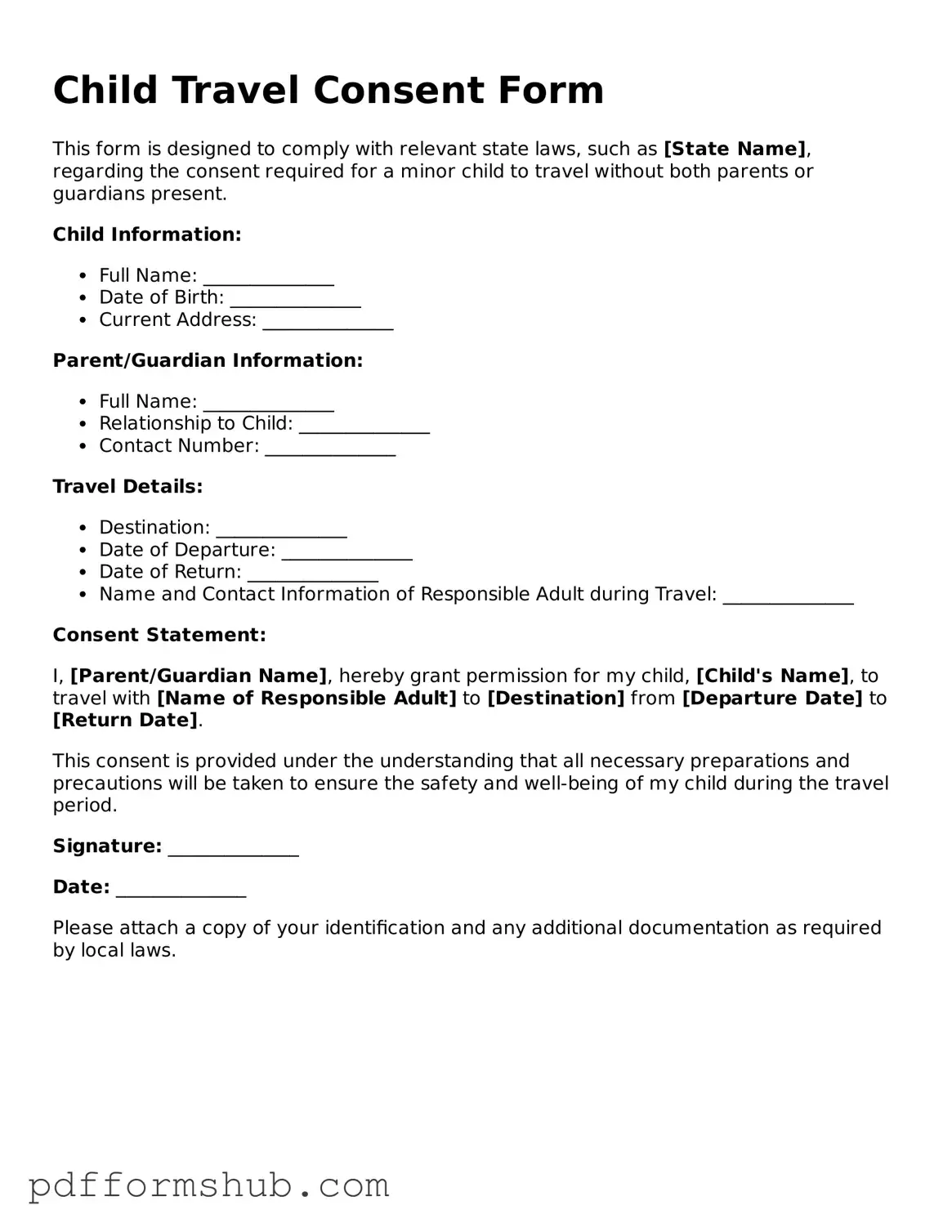Traveling with children can be an exciting adventure, but it also comes with important responsibilities that parents and guardians must address. One crucial aspect of this preparation is the Child Travel Consent Form. This document serves as a legal safeguard, ensuring that a child can travel with an adult who is not their parent or legal guardian. It outlines the consent given by the parent or guardian, detailing the child's name, the travel itinerary, and the accompanying adult's information. Not only does this form help prevent potential misunderstandings at borders or during travel, but it also protects against issues such as parental abduction. Additionally, having a Child Travel Consent Form can facilitate smoother communication with authorities, airlines, and other entities involved in the travel process. Whether you are planning a family vacation, sending your child on a trip with relatives, or allowing them to travel for educational purposes, understanding the significance of this form is essential. Ensuring that all necessary information is included and properly signed can make a world of difference in safeguarding your child's travel experience.
